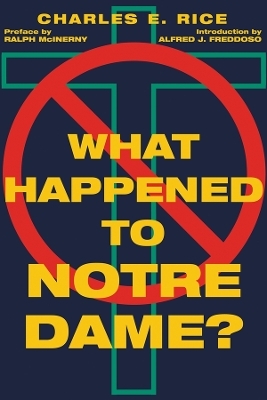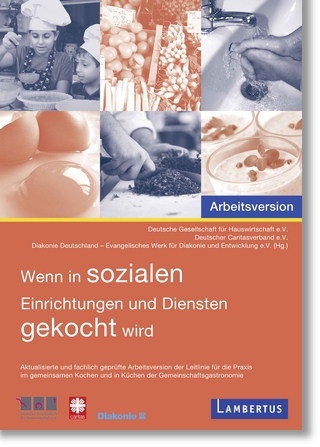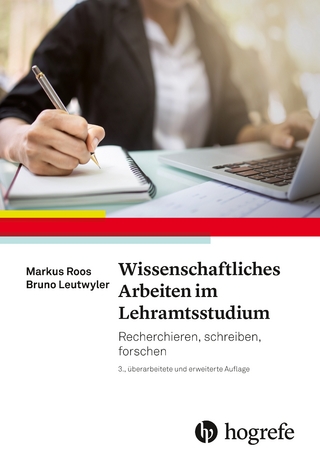
What Happened to Notre Dame?
St Augustine's Press (Verlag)
978-1-58731-920-4 (ISBN)
Notre Dame’s honoring of Obama is not merely a “Catholic” thing. Many thousands of citizens with no Catholic or Notre Dame connections have protested it. They see it as a capitulation of faith to expedience and the pursuit of vain prestige. Obama’s record and stated purposes are hostile to the most basic truths of faith and the natural law affirmed by the Catholic Church and by many others. Four decades ago, in 1967, the major “Catholic” universities declared their “autonomy” from the Catholic Church in the Land O’Lakes Declaration. The honoring of Obama reflects the replacement by those universities of the benign authority of the Church with the politically correct standards of the secular academic establishment and, especially, of the government.
There is a lesson here for all Americans. Notre Dame fell into relativism and expediency because it rejected the Church as the authentic interpreter of the moral law. In this post-Christian era, American culture is following a similar path by reducing morality to the unguided consensus of individual choices. If no code of right and wrong has moral authority – not even the Ten Commandments – then society is ruled by the
conflict of interests, and might makes right. The jurisprudence of such relativism is legal positivism in which no law can be criticized as unjust because no one can know what is “just.”
What Happened to Notre Dame? by Charles E. Rice, with an Introduction by Alfred Freddoso – two of Notre Dame’s most distinguished scholars, who together have served the University for over 70 years – first recounts the details of Notre Dame’s honoring of President Obama. It then examines the succession of fall-back excuses offered by the Notre Dame President Rev. John I. Jenkins, c.s.c., and University publicists to justify Notre Dame’s defiance of the nation’s bishops and of Catholic teaching.
But Rice is not content with mere reportage. What Happened to Notre Dame?diagnoses the problem’s roots by first providing an overview of the Land O’Lakes Declaration, its inception and its aftermath, including the ways in which its false autonomy from the Church has led to an erosion of the Catholic identity of Notre Dame and other Catholic universities.
Then, it offers a cure. Christ, who is God, is the author of the divine law and the natural law. The book presents reasons why an acknowledged interpreter of these laws is necessary, and why that interpreter has to be the Pope exercising the Magisterium, or teaching authority of the Church. And it shows why it is so important that we have such a moral interpreter for all citizens and not just for Catholics. The alternative is what Pope Benedict XVI calls the “dictatorship of relativism,” which the book analyzes. Even for those who do not share the Catholic faith, our reason leads us to conclude that the natural law is the only moral code that makes entire sense and points to the conclusion that the Vicar of Christ is uniquely suited to give authoritative interpretation to that law.
In the final chapter Rice shows why great good can come out of Notre Dame’s blunder in rendering its highest honors to such an implacable foe. Notre Dame got itself into such a mess because it attempted to be Catholic without the Church and ended up defying the Church and disgracing itself. But good can result from the lesson here that roll-your-own morality is no more tenable than roll-your-own Catholicism.
* * * * *
Rice shows why what happened to Notre Dame is symptomatic of what’s happening in other Catholic colleges, indeed colleges with non-Catholic religious affiliations. He shows how the abandonment of principle at the college level spills over to the general culture, with devastating effect, as religious standards get pushed out of the public square. And, finally, he shows why people who have never seen the Golden Dome, never rooted for the Fighting Irish, and never graced a Catholic Church, also have a stake in what happened to Notre Dame.
Charles E. Rice is prof. emer. in the Law School, University of Notre Dame, and is author, among other works, of Where Did I Come From? Where Am I Going? How Do I Get There? and The Winning Side, both from St. Augustine's Press. He has long been a pro-life activist, and was a founding member and legal counsel to the New York Conservative Party. Alfred J. Freddoso, prof. of Philosophy, University of Notre Dame, is a renowned translator from medieval Latin, most recently Thomas Aquinas's Treatise on Law: The Complete Text, from St. Augustine's Press.
Acknowledgments ix
Introduction by Alfred J. Freddoso xi
1. Invitation and Reaction 1
2. The Justification: Abortion as Just Another Issue 9
3. The Justification: The Bishops’ Non-Mandate 18
4. The Obama Commencement 25
5. ND Response 34
6. Land O’Lakes 42
7. Autonomy at Notre Dame: “A Small Purdue with a
Golden Dome”? 54
8. Autonomy at Notre Dame: The “Research University” 57
9. Autonomy at Notre Dame: A Catholic Faculty? 62
10. Autonomy at Notre Dame: Academic Freedom? 68
11. Autonomy at Notre Dame: The Politicization of Abortion 76
12. The Magisterium: Why Notre Dame Needs It 92
13. The Magisterium and the Dictatorship of Relativism 103
14. The Magisterium: Protector of Conscience and Freedom 110
15. God Is Love 118
16. Of Human Life 123
17. Love in Truth 130
18. In Hope We Were Saved 139
19. The Question of Truth: Can “Autonomy” Be Fixed? 143
20. Postscript: Notre Dame as a Lesson for Everyone 153
Appendix: Talk for ND Response – Sunday, May 17, 2009
by Rev. Wilson D. Miscamble, c.s.c. 156
Endnotes 163
Index 181
| Erscheint lt. Verlag | 25.9.2009 |
|---|---|
| Verlagsort | Indiana |
| Sprache | englisch |
| Maße | 159 x 230 mm |
| Gewicht | 316 g |
| Themenwelt | Geisteswissenschaften ► Geschichte |
| Sozialwissenschaften ► Pädagogik ► Allgemeines / Lexika | |
| Sozialwissenschaften ► Pädagogik ► Erwachsenenbildung | |
| ISBN-10 | 1-58731-920-9 / 1587319209 |
| ISBN-13 | 978-1-58731-920-4 / 9781587319204 |
| Zustand | Neuware |
| Haben Sie eine Frage zum Produkt? |
aus dem Bereich


